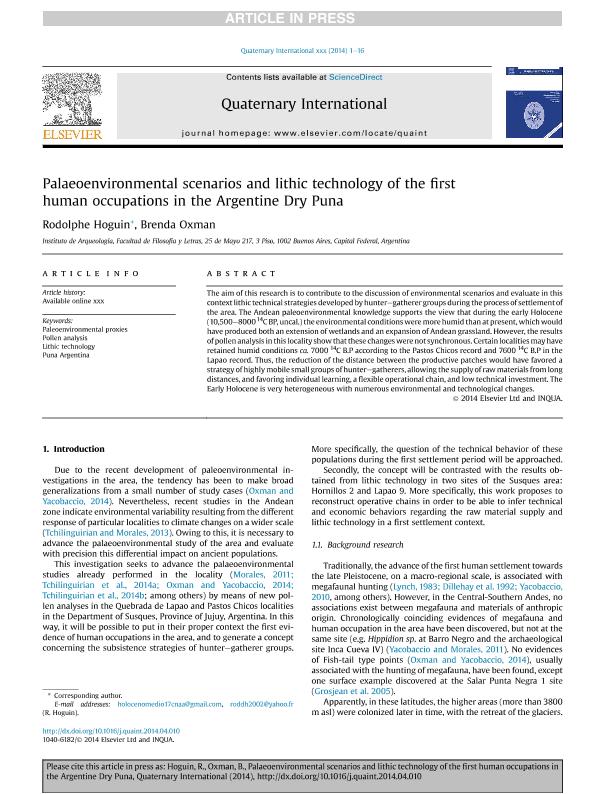Artículo
Palaeoenvironmental scenarios and lithic technology of the first human occupations in the Argentine Dry Puna
Fecha de publicación:
03/2015
Editorial:
Pergamon-Elsevier Science Ltd
Revista:
Quaternary International
ISSN:
1040-6182
Idioma:
Inglés
Tipo de recurso:
Artículo publicado
Clasificación temática:
Resumen
The aim of this research is to contribute to the discussion of environmental scenarios and evaluate in this context lithic technical strategies developed by hunter-gatherer groups during the process of settlement of the area. The Andean paleoenvironmental knowledge supports the view that during the early Holocene (10,500-8000 14CBP, uncal.) the environmental conditions were more humid than at present, which would have produced both an extension of wetlands and an expansion of Andean grassland. However, the results of pollen analysis in this locality show that these changes were not synchronous. Certain localities may have retained humid conditions ca. 700014CB.P according to the Pastos Chicos record and 760014CB.P in the Lapao record. Thus, the reduction of the distance between the productive patches would have favored a strategy of highly mobile small groups of hunter-gatherers, allowing the supply of raw materials from long distances, and favoring individual learning, a flexible operational chain, and low technical investment. The Early Holocene is very heterogeneous with numerous environmental and technological changes.
Archivos asociados
Licencia
Identificadores
Colecciones
Articulos(SEDE CENTRAL)
Articulos de SEDE CENTRAL
Articulos de SEDE CENTRAL
Citación
Hoguin, Rodolphe; Oxman, Brenda; Palaeoenvironmental scenarios and lithic technology of the first human occupations in the Argentine Dry Puna; Pergamon-Elsevier Science Ltd; Quaternary International; 363; 3-2015; 78-93
Compartir
Altmétricas




